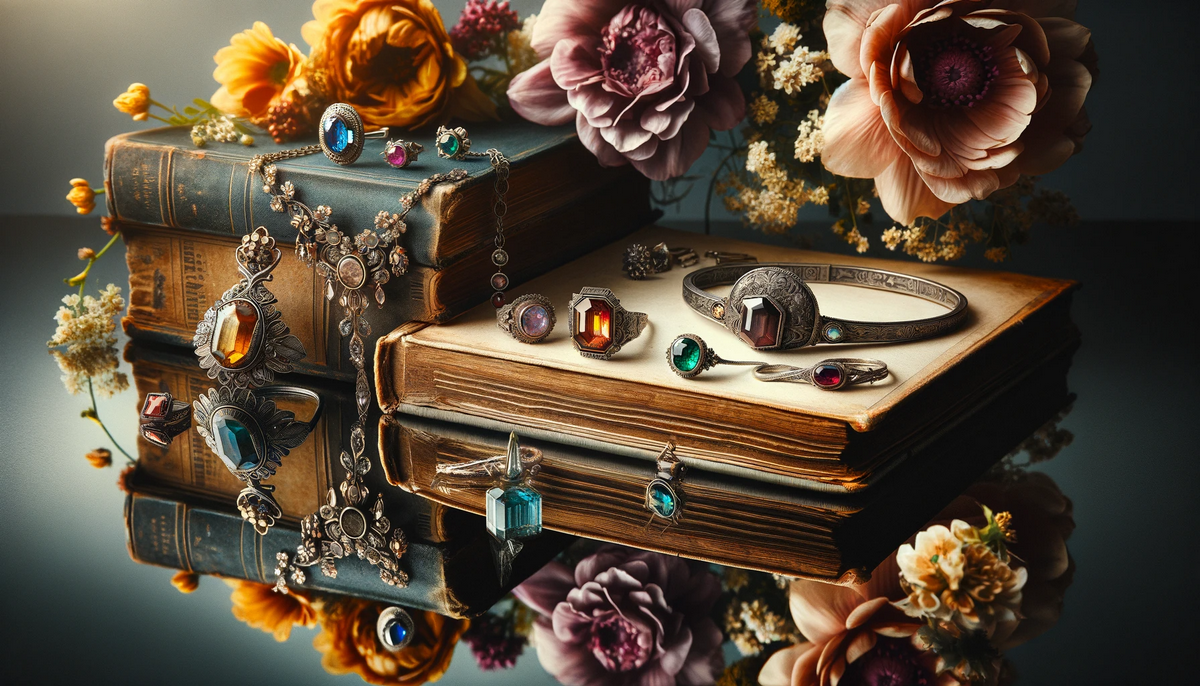
The world of jewelry is a symphony of precious moments and possessions and this beauty deserves to be captured in all its glory. From the sparkle of a diamond to the texture of a woven bracelet, each piece tells a story, and visually sharing that narrative is an art that rewards both the creator and the beholder.
In a digital age where online storefronts and social media heavily influence the path to purchase, high-quality product photography stands at the forefront of driving sales and attracting new customers. And importantly, some are the best clipping path service provider that also provides image post-processing services for photographers. Nowhere is this more relevant than in jewelry, where the tiniest details and the play of light are essential.
This detailed guide is tailored to both novice and advanced photographers, and even jewelry enthusiasts eager to document their collections or creations. We’ll journey through the crucial elements that make for stunning jewelry photos, exploring techniques like using props, mastering natural light, delving into the world of macro photography, and demystifying the effective use of a lightbox. Let’s also address the specific challenges faced when photographing jewelry—capturing sparkle, achieving perfect focus, handling reflections, and maneuvering through the nuances of composition.
The Importance of High-Quality Jewelry Photography
In the realm of e-commerce, the maxim “a picture is worth a thousand words” couldn’t be truer. For jewelry, an industry heavily reliant on visual appeal, high-quality photography is non-negotiable. Stunning images serve as the handshake that invites potential buyers to closer interaction and, ideally, a transaction.
For consumers, a well-photographed piece not only showcases its beauty but also its quality and craftsmanship. Given that jewelry is often given to celebrate the most important milestones in life, it stands to reason that customers want to be confident in what they’re investing in.
Now, let’s delve into the nitty-gritty of making your jewelry photography stand out.
1. Using Props: The Art of Contextualizing Elegance
Props are the silent storytellers in your jewelry photographs, offering context and enhancing the aesthetic appeal of the pieces. When used thoughtfully, they can breathe life into the jewelry, providing a narrative that resonates with the viewer.
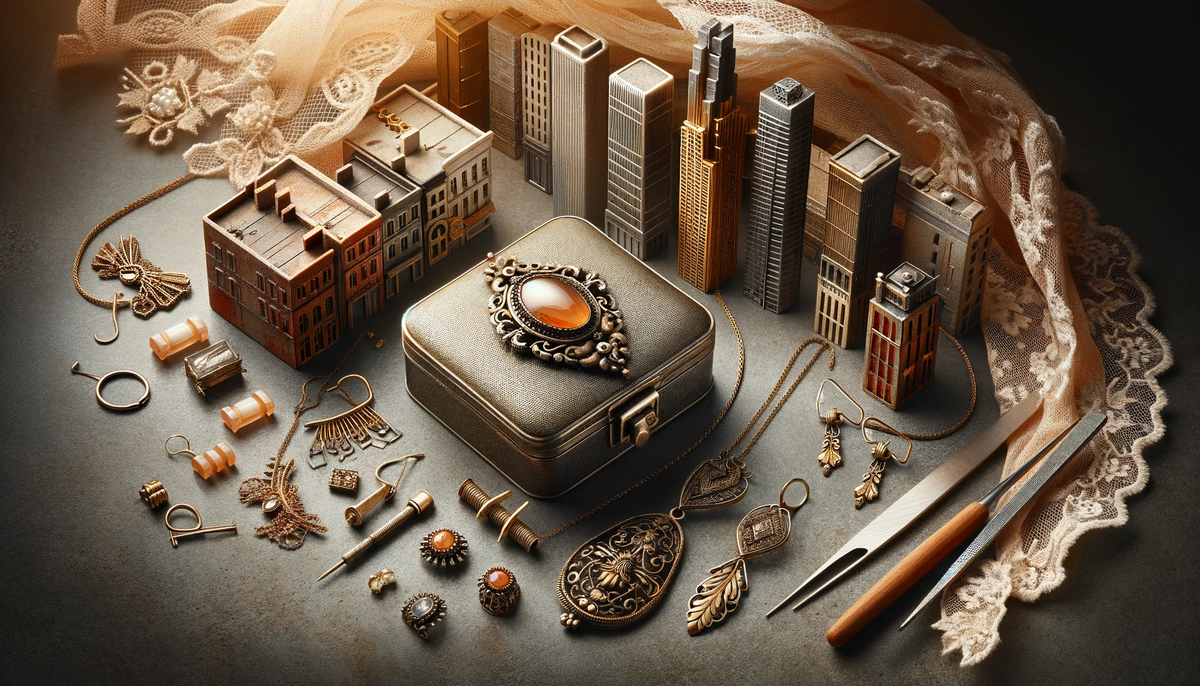
Enhancing the Aesthetics with Props
The right props can add that extra oomph to your jewelry photography, making it more relatable and appealing. For instance, a vintage locket might be nestled in lace to evoke a romantic sentiment, while bold, modern earrings might be juxtaposed against a backdrop of urban architecture.
Choosing the Right Props
Select props that complement the style and persona of the jewelry while avoiding anything that could overwhelm or distract. Things to consider include:
- Color scheme: Harmonize the colors of the props with the jewelry for cohesion.
- Size and scale: Ensure the props don’t draw attention away from the jewelry; they should merely frame and highlight.
- Context: Consider who the jewelry is for and the context in which they might wear it.
By uniting your jewelry with appropriate props, you can create narratives, trigger emotions, and, most importantly, make your photos delightful to look at.
2. Natural Light Photography: The Soft Embrace of the Sun
The use of natural light in photography is often celebrated for the soft, diffused look it produces. For jewelry photography, natural light can be particularly flattering, creating the kind of images that draw the viewer in with their warmth and life-like qualities.
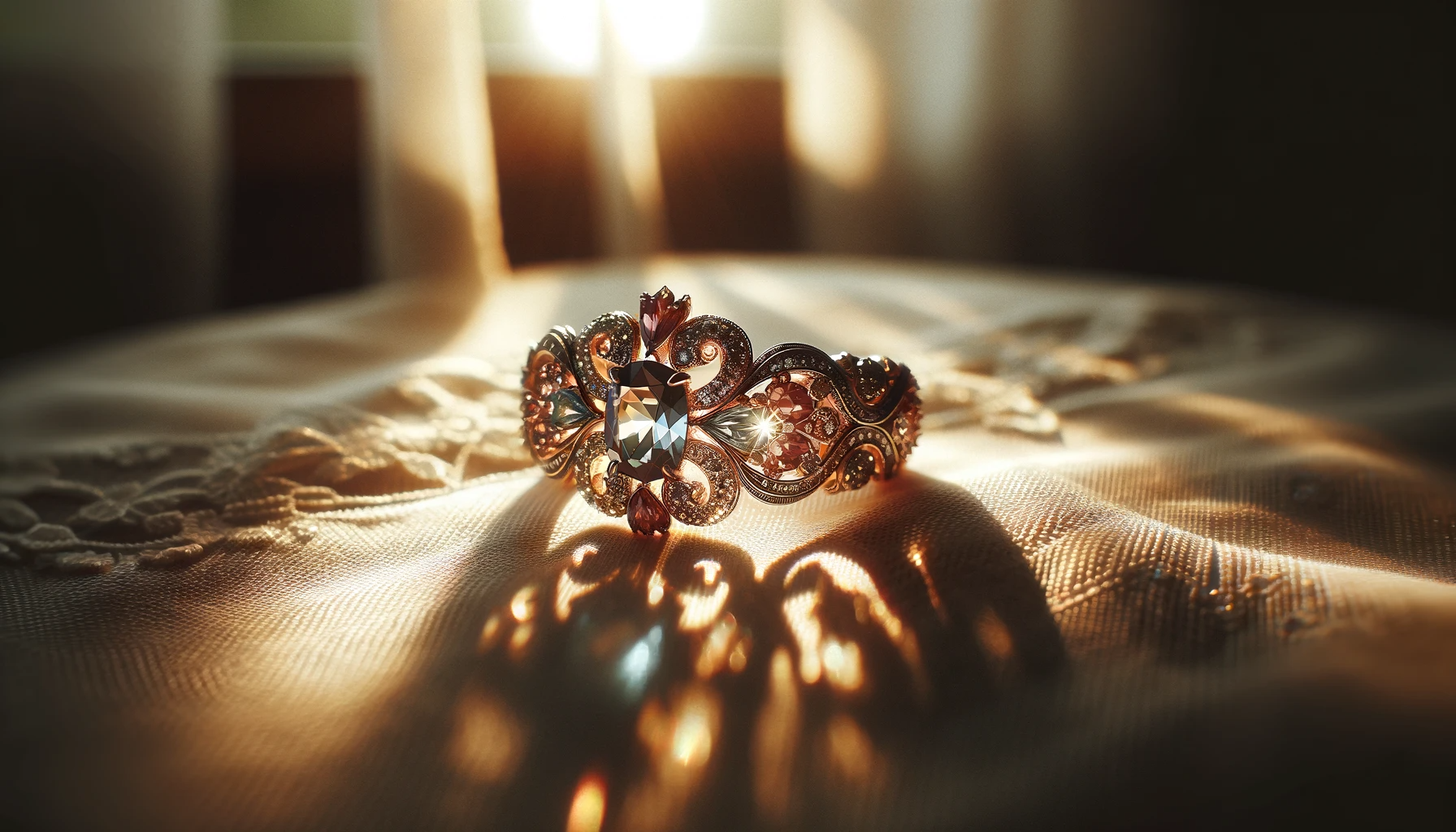
Utilizing Natural Light
When using natural light, the key is to find the right quantity and quality. For early morning shoots or during the golden hour before sunset, the light is softer, warmer, and more directional, casting gentle shadows that can add depth and definition to jewelry.
Tips for Finding the Best Lighting
Experiment with the position of your setup, especially your table and jewelry, to find the most pleasing angles. Use curtains or blinds to diffuse harsh sunlight if necessary, and remember that overcast days can be just as good, if not better, for providing a soft and even light that won’t create strong shadows.
3. Macro Photography: Into the Intricate Details
Macro photography is the art of capturing small subjects at larger-than-life sizes. For jewelry, where the smallest of details can make a significant impact, macro photography is a must-have skill.
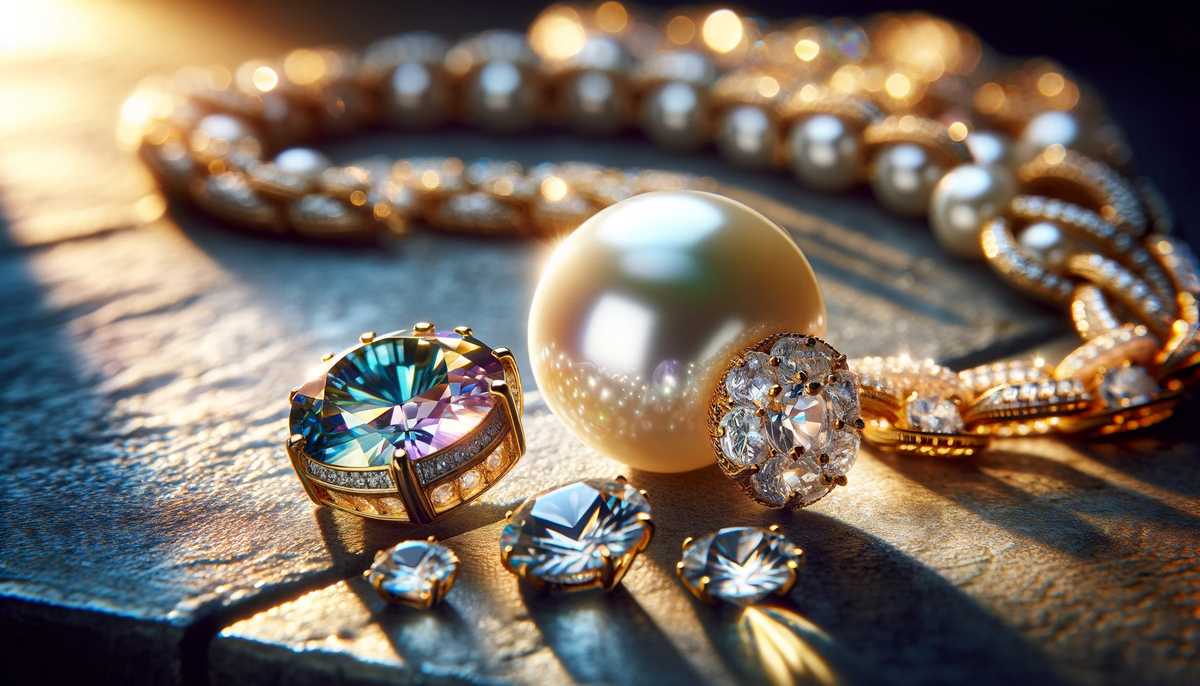
Capturing Intricacy at Its Finest
With macro photography, you can show the intricate texture of a pearl, the cut of a gemstone, or the weave of a chain, all in stunning detail. This technique allows you to create images that not only attract but also inform and assurely showcase the quality of your pieces.
Equipment and Techniques for Macro Photography
To venture into the world of macro jewelry photography, invest in a macro lens or a set of extension tubes that can be attached to your existing lenses. Working with such close subjects can create a very shallow depth of field, so use a small aperture to keep as much of the item in focus as possible. A tripod is essential to keep your camera steady, and for the highest detail, consider manually focusing to get the sharpest image.
4. Lightbox Photography: Crafting the Perfect Environment
Lightbox photography is a technique where you use a controlled lighting environment to eliminate harsh shadows and evenly light your jewelry, creating a clean, professional look.
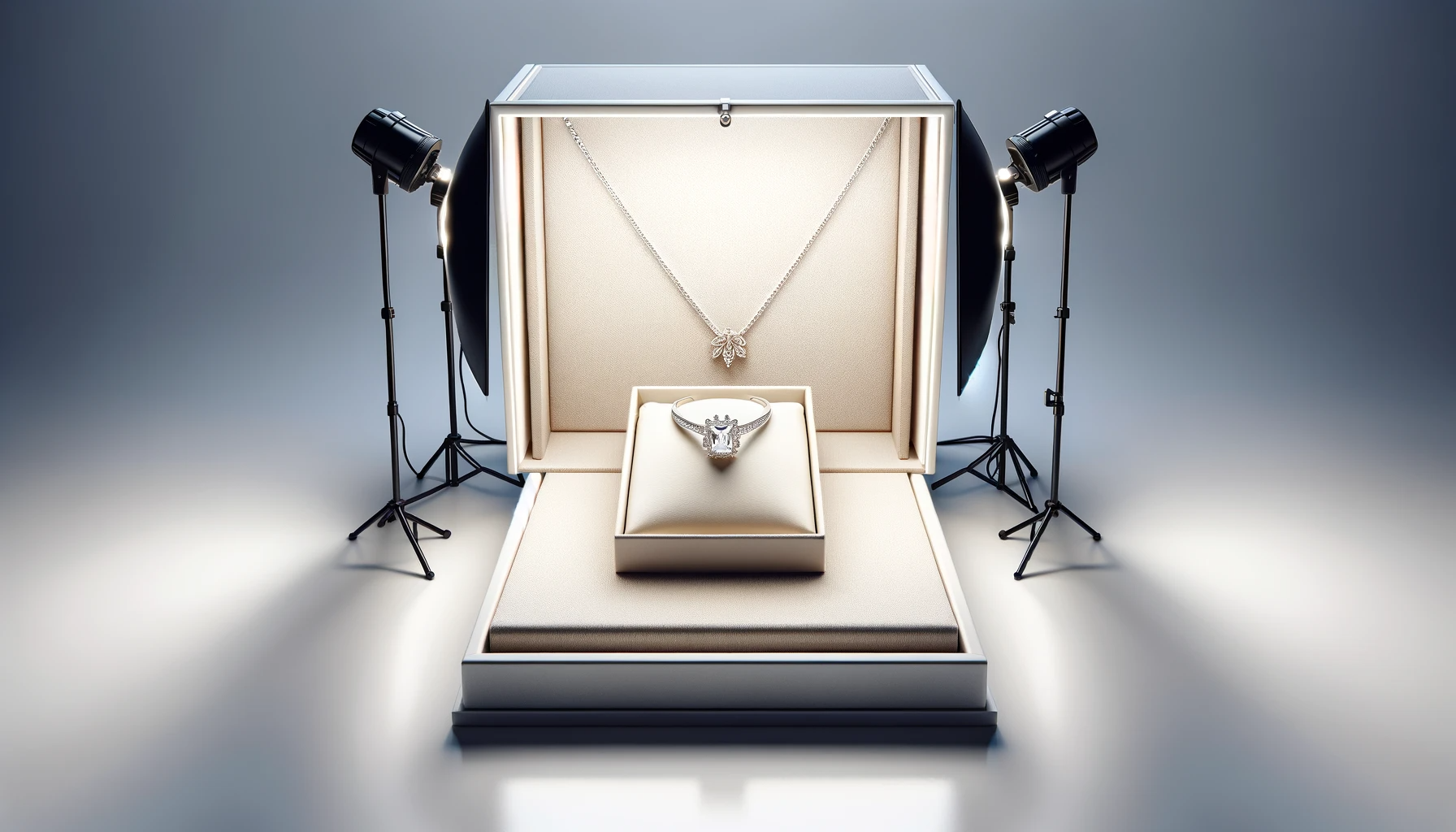
The Advantages of a Lightbox
When shooting in a lightbox, you have the advantage of a consistent, predictable lighting environment, which is especially helpful for capturing jewelry that features intricate metalwork and reflective surfaces.
Steps for Setting Up and Using a Lightbox
- Choose the right lightbox: Some lightboxes are foldable and ideal for on-the-go shooting, while others are more substantial and better suited for indoor studio work.
- Position your jewelry: Use a neutral background within the lightbox, and carefully place your jewelry to ensure all the important details are visible.
- Light your setup: The beauty of a lightbox is the diffusion of light from all angles, reducing harsh shadows. Adjust the intensity of the light to achieve the right balance for your piece.
- Final touches: Once your lighting is in place, play with composition and the use of props within the lightbox to create engaging and comprehensive images.
5. Addressing Jewelry Photography Challenges
Photographing jewelry presents a unique set of challenges, from the difficulty in capturing the sparkle of gemstones without overexposure, to managing reflections and ensuring the focus is pinpoint sharp.
Capturing the Sparkle of Gemstones
To capture the sparkle, it’s essential to use an aperture that allows you to achieve as much depth of field as possible while still letting in enough light. Reflective surfaces can be used to bounce light back into gemstones, enhancing their brilliance without overexposing your image.
Achieving Focus on Tiny Details
Use manual focus for the most precise control over where your camera is focusing. If your hand isn’t steady enough, utilize a remote shutter release or the self-timer on your camera to prevent any movement that could blur the image.
Managing Reflections on Shiny Surfaces
Conceal your light source behind a diffuser or use a reflector at an angle where it won’t cause any reflections on the jewelry. If you do want some reflections for artistic effect, place pieces with reflective surfaces in a controlled manner to create appealing “controlled” reflections.
Creating a Balanced Composition with Props
Employ the rule of thirds to position your jewelry within the frame and balance the composition. Your props can introduce leading lines or curves that guide the viewer’s eye toward the focal point, adding to the cohesiveness and visual appeal of your image.
In Conclusion
Crafting the perfect jewelry photograph is a work that entails understanding the play of light, the mastery of macro, and the creativity in composition. By carefully implementing these creative ideas, you can ensure that your jewelry photographs not only display your pieces to their full advantage but also tell a story that entices and engages your audience.
Remember, in the competitive world of online retail, your visuals are often the first—and sometimes the only—impression you get to make. So, invest the time and care into your photography, for it is an investment that can pay lucrative dividends in the form of increased traffic, higher conversion rates, and a more satisfied customer base.

